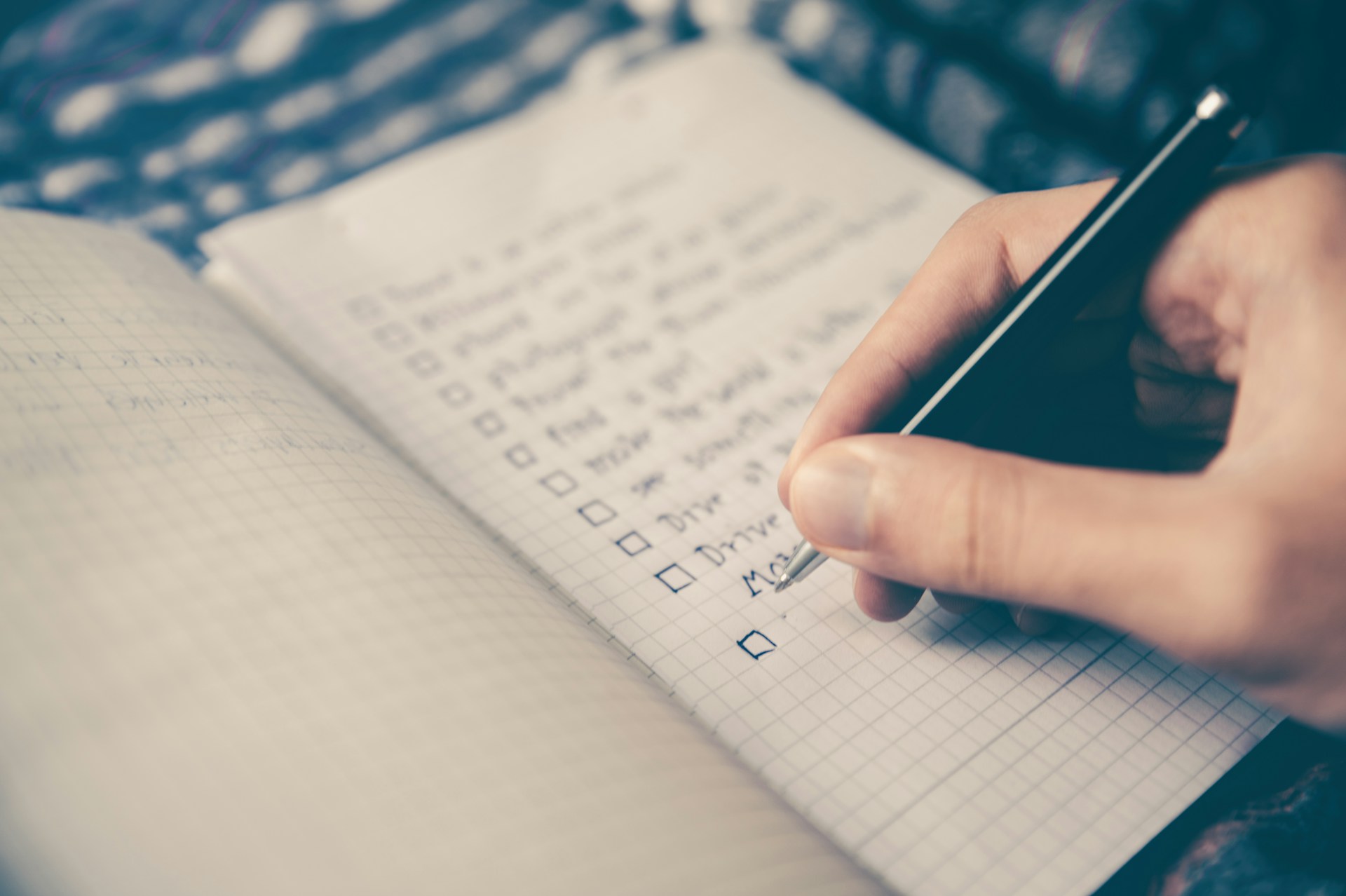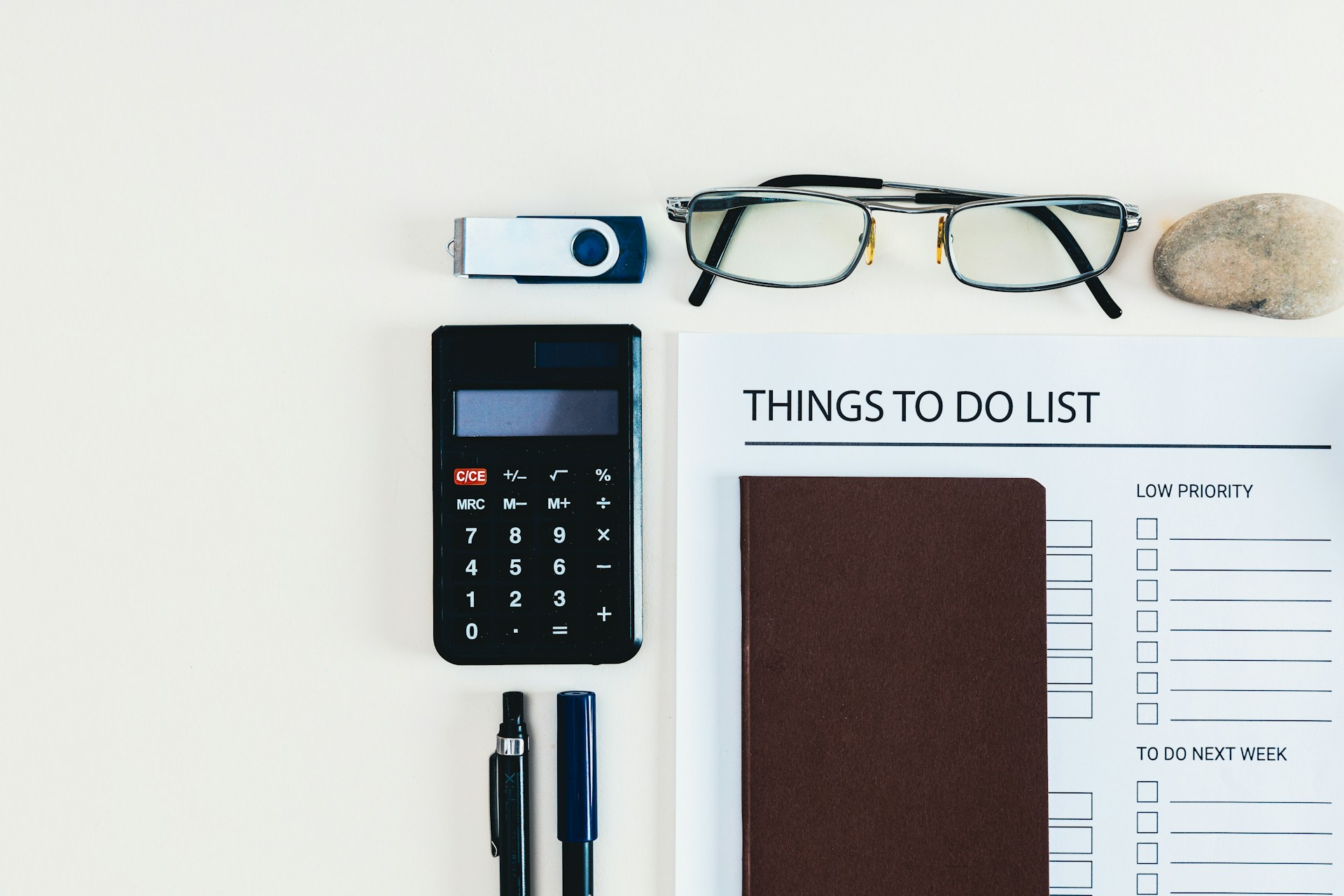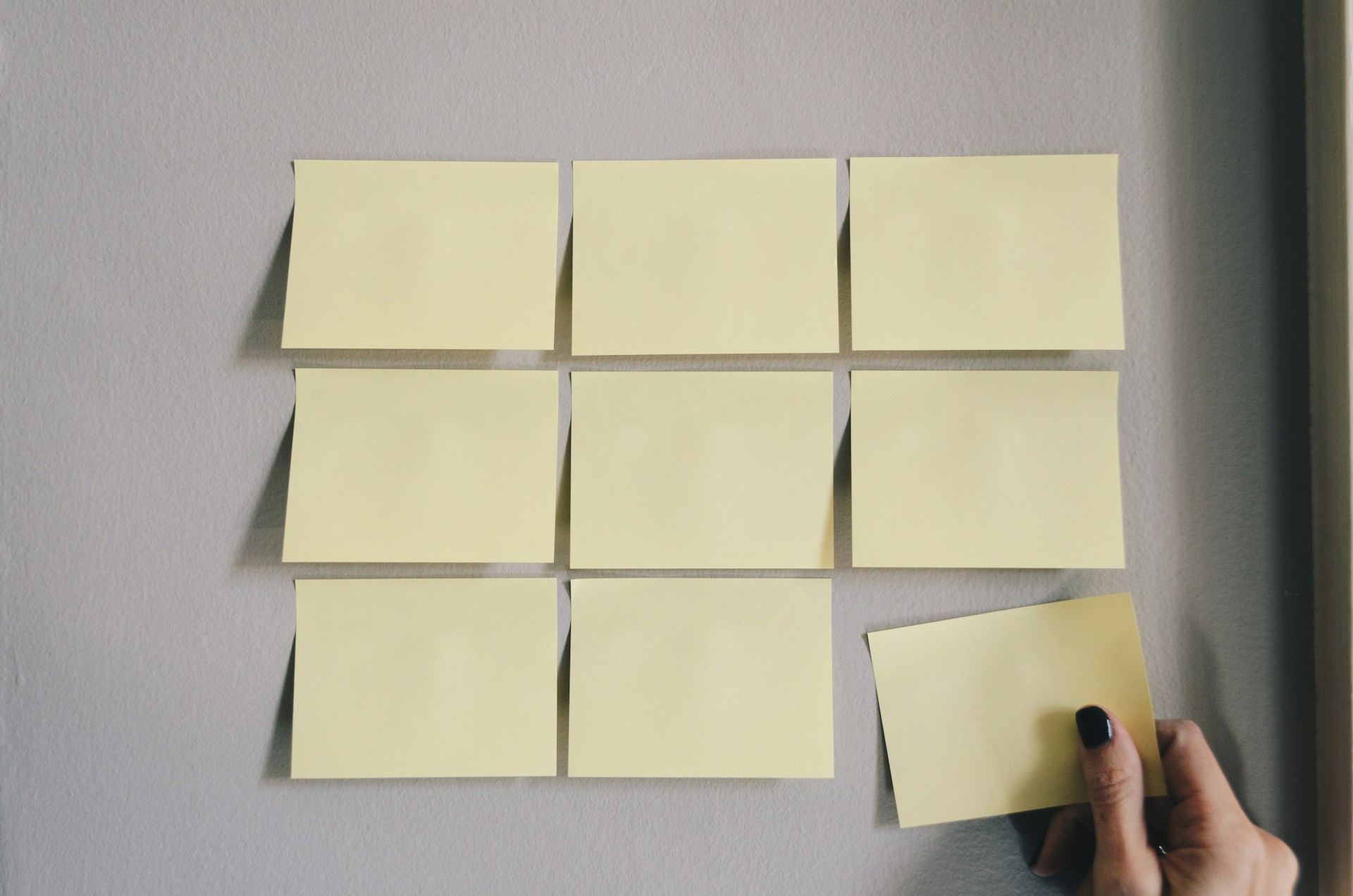To-Do List for ADHD: A Specialist’s Guide to Boosting Productivity

Living with ADHD (Attention Deficit Hyperactivity Disorder) often means navigating through a maze of distractions, impulsivity, and the frequent feeling of overwhelm. One effective tool to cut through this chaos is a well-crafted to-do list. A good to do list for ADHD can be a game-changer, enhancing focus and productivity. Here’s a specialist’s guide on how to optimize your to-do list to make your days more productive and less stressful.
Understanding the Importance of a To-Do List for ADHD

ADHD affects the executive functions of the brain, which can make planning, prioritization, and time management challenging. This is where a tailored to do list for ADHD can make a significant difference. It provides a visual overview of what needs to be done, making tasks appear more manageable and less daunting. A to-do list also provides the satisfaction of checking off completed items, which can be incredibly rewarding and motivating.
How to Create an Effective To-Do List for ADHD

Break It Down
Start by breaking down large tasks into smaller, more manageable steps. This not only makes starting less intimidating but also provides multiple opportunities to experience success throughout the day. Each small task completed is a step in the right direction, keeping motivation high.
Prioritize Wisely
Use simple techniques to prioritize tasks. Methods like the Eisenhower Box can help you decide on and prioritize tasks based on urgency and importance. Focus on one high-priority task at a time to prevent feeling overwhelmed.
Visual Aids and Color Coding
Incorporate visual aids such as color coding or icons to make the list more engaging and easier to navigate. Colors and symbols can be used to indicate the priority or type of task, making them stand out at a glance.
Time Blocks
Assigning specific time blocks to each task can be particularly helpful. This method, known as time-blocking, helps you manage your day effectively and prevents the pitfalls of underestimating how long a task will take.
Use Technology
There are many apps and digital tools designed to enhance productivity, especially for those with ADHD. Tools like Trello, Asana, or Microsoft To-Do can help you organize tasks, set reminders, and even share your lists if teamwork is involved.
Maintain a Flexible Approach
Flexibility is crucial when you have ADHD. Some days you might feel more capable than others. Adjust your to-do list accordingly to accommodate how you feel and maximize productivity without burnout.
Limit Your List
Avoid cluttering your to-do list with too many tasks. Limit your daily goals to about three to five key tasks. This helps in maintaining focus and reducing the overwhelm that can come from a lengthy list.
Incorporate Breaks
Scheduled breaks are essential. The Pomodoro Technique, which involves working for a set period followed by a short break, is incredibly effective for maintaining concentration and stamina throughout the day.
Regular Reviews
End your day with a review of what you’ve accomplished and what needs to be deferred to another day. This not only provides closure but also helps you plan more effectively for the future.
Reward System
Implement a reward system for completing tasks. This could be as simple as a cup of coffee after a major task or a walk after a few smaller tasks. Rewards can boost motivation and provide positive reinforcement.
Quick Tips for Crafting a To-Do List for ADHD
- Break large tasks into small steps: This makes starting easier and less daunting.
- Prioritize tasks using simple methods: Helps in managing day-to-day responsibilities.
- Incorporate colour coding and visuals: Enhances the usability of your to-do list.
- Assign time blocks to tasks: Aids in effective time management.
- Limit your list to essential tasks: Keep your day manageable and focused.
10 To-Do List for ADHD: Practical Ideas to Organize Your Day

When it comes to managing ADHD, personalizing your to-do list can make a big difference. Here are ten examples of how you can structure your to-do list to improve focus, manage time effectively, and keep motivation high throughout the day.
1. The Classic Checklist
Morning Routine: Brush teeth, breakfast, meditate for 10 minutes.
Work Tasks: Email responses (30 min), complete project proposal (1 hr).
Evening Relaxation: Read a book (20 min), and plan next day (10 min).
2. The Time-Blocked Planner
8-9 AM: Check emails and organize tasks.
9-11 AM: Focus on major project work.
2-3 PM: Attend team meeting.
4-5 PM: Review progress and adjust tasks for tomorrow.
3. The Priority Matrix
High Priority: Finish client report due today.
Medium Priority: Schedule dentist appointment.
Low Priority: Organize desk.
4. The Color-Coded System
Red (Urgent): Prepare presentation for tomorrow’s meeting.
Blue (Important but Not Urgent): Review and categorize inbox.
Green (Routine): Water plants.
5. The Reward-Linked List
Task: Complete 2 hours of focused work.
Reward: 15 minutes of social media time.
Task: Write weekly update report.
Reward: Take a 20-minute walk.
Focus only on three major tasks per day to prevent overwhelm.
Today: Draft blog post, plan project timeline, prepare dinner.
7. The Pomodoro Technique List
Task: Research article sources (2 Pomodoros).
Break: 5 minutes.
Task: Draft section of the article (4 Pomodoros).
8. The Digital Assistant
Use a digital tool like Asana to list and categorize tasks.
Set reminders for each task with specific, timed notifications.
9. The Visual Board
Create a Trello board with columns for “To Do”, “Doing”, and “Done”.
Move cards as you progress, providing a clear visual of your achievements.
10. The Integrated Approach
Combine methods: Use a priority matrix within a time-blocked schedule.
Use digital tools for reminders and tracking, along with a physical notepad for quick notes.
Each of these examples of a to-do list for ADHD can be adjusted to fit your personal style, the specific demands of your day, or the particular challenges you face with ADHD. Experiment with different formats and tools until you find the combination that makes your daily management smoother and more effective.
Enhancing Your To-Do List with Tools and Techniques
While paper lists work well, digital tools can add layers of functionality that are beneficial for ADHD management. Here are a few tools that are particularly helpful:
- Trello: Excellent for visual task management. It allows you to create boards for different projects and move tasks around as their status changes.
- Google Keep: Great for capturing tasks on the go. It syncs across all devices, so you can access your tasks anywhere.
- Evernote: Ideal for those who need to keep a lot of detailed notes along with their tasks. It’s also good for storing web clippings and other digital information.
- Forest: Helps keep your focus by letting you grow a virtual tree which grows as you work and can be killed by leaving the app to do something else.
Each tool offers unique benefits, so it may take some experimenting to find which one or combination works best for you.
FAQs: To-Do List for ADHD
How often should I update my to-do list for ADHD?
Updating your to-do list should be a daily ritual. Reviewing and adjusting your list at the end of the day or first thing in the morning helps keep tasks manageable and goals aligned with your current priorities.
What should I do if I consistently fail to complete tasks on my to-do list?
First, ensure that your tasks are broken down into sufficiently small steps. If tasks still seem overwhelming, it might help to further break them down or reassess the priorities you’ve set. Remember, flexibility is key.
Can a to-do list for ADHD work without using digital tools?
Absolutely! While digital tools offer convenience and additional features like reminders, a physical to-do list can be just as effective. The key is consistency and finding a method that you can stick with.
How do I handle distractions that prevent me from completing my to-do list?
Distractions are particularly challenging for individuals with ADHD. Techniques like setting a specific workspace, using noise-cancelling headphones, or using apps that limit distractions on digital devices can be effective. Additionally, incorporating scheduled breaks can help manage the impulse to shift focus. If a distraction becomes too persistent, consider including it as a task on your list to allocate time to it appropriately, or use methods like the ‘two-minute rule’—if something distracts you and can be done in two minutes or less, do it immediately, then return to your scheduled tasks.
How can I make sure my to-do list for ADHD helps me with long-term projects?
For long-term projects, it’s beneficial to create a master project list separate from your daily to-do list. Break the project into phases or milestones, and then integrate these smaller, more immediate tasks into your daily or weekly lists. This keeps the project moving forward without overwhelming your daily agenda and helps maintain a clear focus on both immediate tasks and long-term goals.
Discover the Path to Healthier Social Media Habits for Your Child
Navigating the complex world of social media can be daunting for both children and their parents. If you’re looking to guide your child through the maze of likes, shares, and follows in a way that promotes health, focus, and productivity, then our new online course might just be what you need.
Designed by renowned psychologist Dr. Lara Honos-Webb, our course “Screen Fiends” offers invaluable insights and practical tools. It’s tailored to help your young ones manage social media use effectively while harnessing their inner “Six Super Powers” to boost executive functioning skills—focusing, productivity, organization, and goal achievement. These lessons draw directly from her acclaimed book, “6 Super Skills for Executive Functioning.”
Don’t miss this opportunity to empower your child to build a balanced and fulfilling digital life. Visit our course page to learn more and to get started on this transformative journey. Help your child turn screen time into a superpower today!
Conclusion
Creating a to-do list for ADHD is more than just jotting down tasks. It involves understanding how ADHD affects your productivity and customizing your approach to harness your strengths and mitigate challenges. By following the guidelines outlined above, you can transform your to-do list from a source of stress to a powerful tool for personal and professional growth. Remember, the goal is to find a system that feels natural, boosts your productivity, and adapts to your changing needs. So, don’t be afraid to try different strategies until you find what works best for you.


